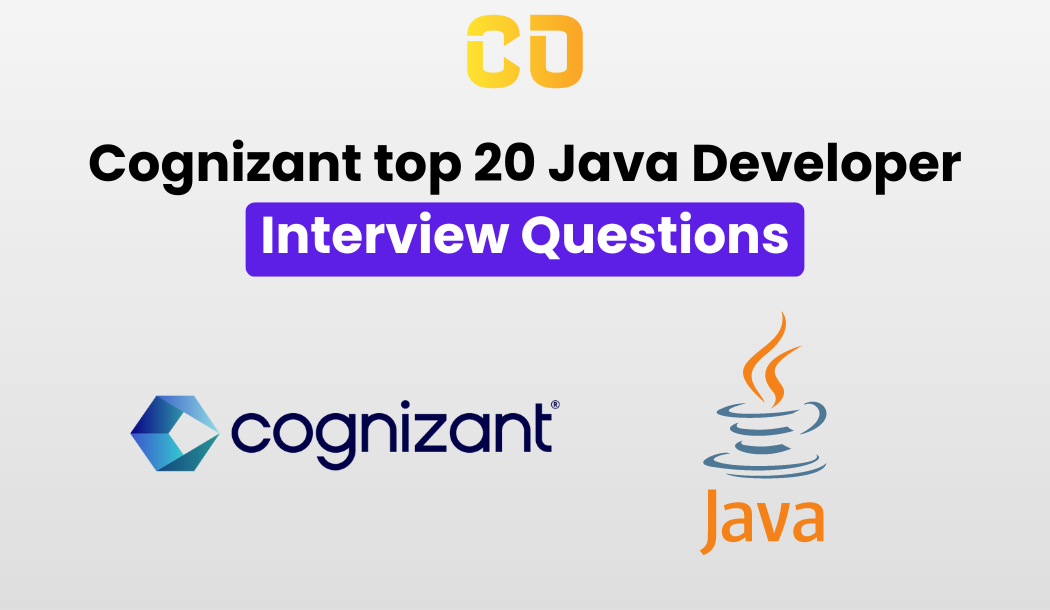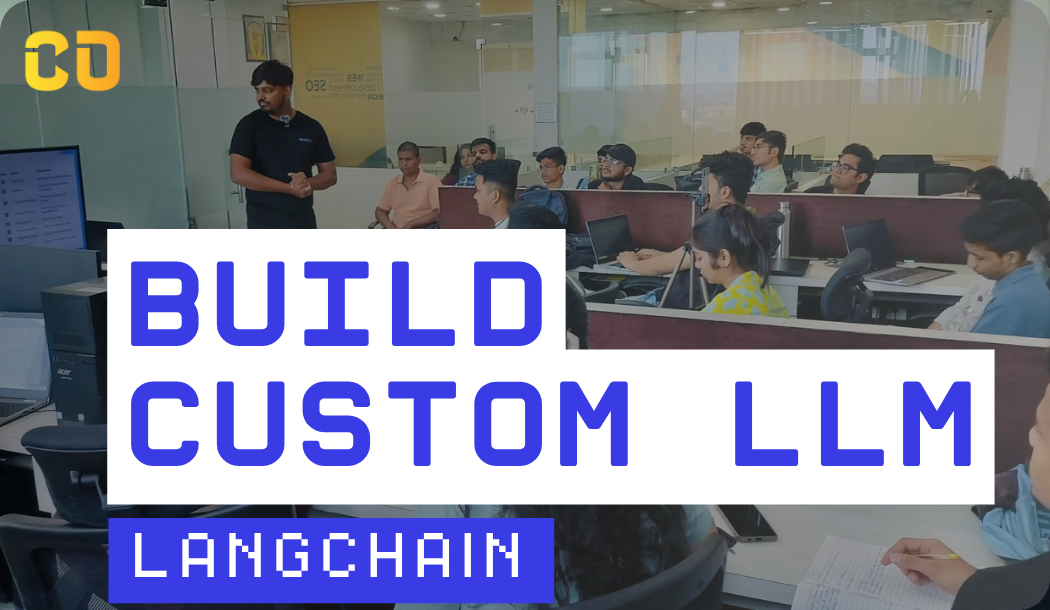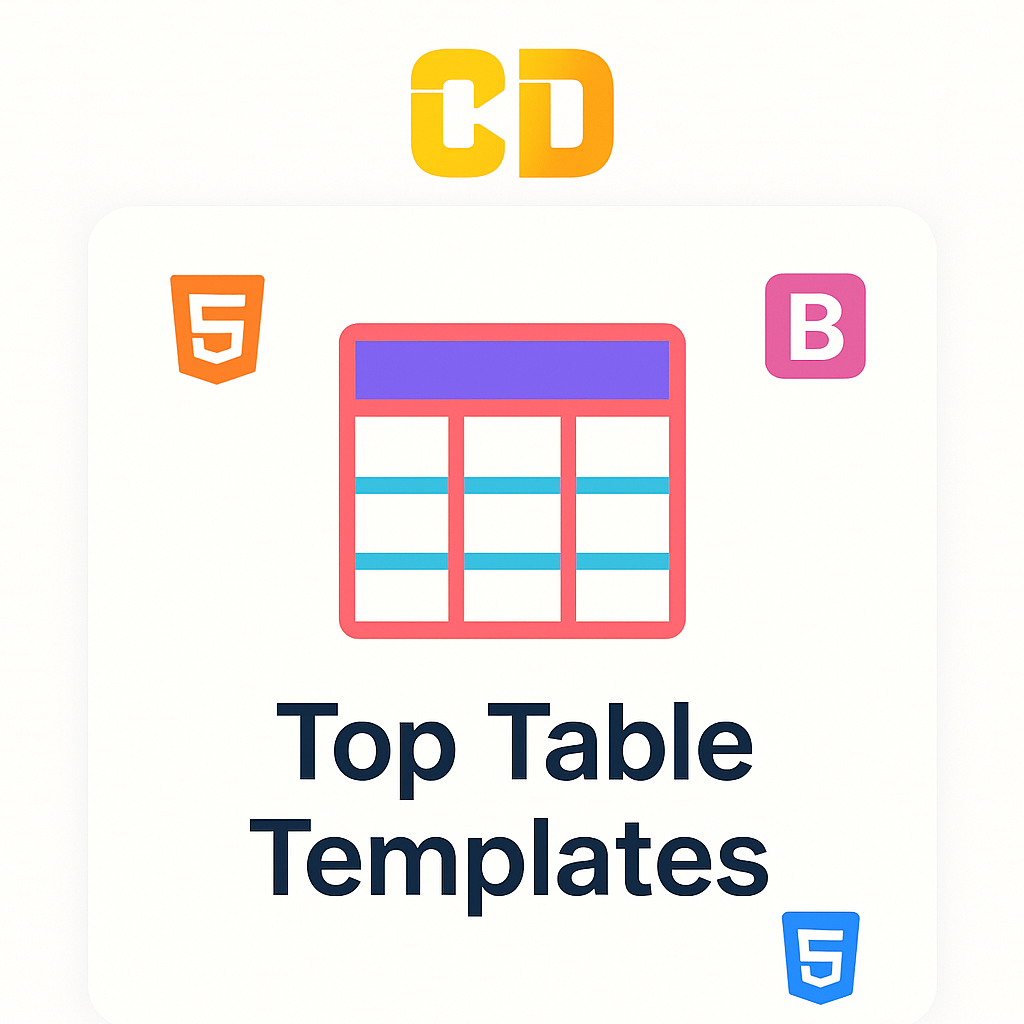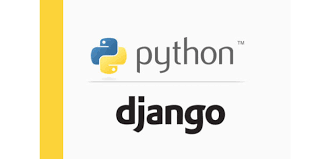Java is a widely used programming language, especially in enterprise-level backend development. As a Java Developer at Cognizant, you need to be proficient in core Java concepts, object-oriented programming (OOP), collections, multithreading, and frameworks like Spring. Below are the top 20 Cognizant Java Developer interview questions to help you prepare.
1. What are the main features of Java?
Java is a popular programming language due to its key features:
- Platform-independent: The "write once, run anywhere" philosophy, thanks to the Java Virtual Machine (JVM).
- Object-Oriented: Follows the principles of OOP like inheritance, encapsulation, polymorphism, and abstraction.
- Multithreaded: Allows concurrent execution of two or more parts of a program.
- Robust and Secure: Provides strong memory management and exception handling.
2. What is the difference between JDK, JRE, and JVM?
- JDK (Java Development Kit): Contains tools for Java development, including JRE and compilers.
- JRE (Java Runtime Environment): Provides libraries and JVM for running Java applications.
- JVM (Java Virtual Machine): Converts bytecode into machine-specific code for execution.
3. What is object-oriented programming (OOP), and how does Java implement it?
OOP is a programming paradigm based on objects that contain data and methods. Java implements OOP using key concepts like:
- Encapsulation: Wrapping data and methods into a single unit (class).
- Abstraction: Hiding implementation details and showing only functionality.
- Inheritance: Creating new classes from existing classes.
- Polymorphism: Performing a single task in different ways (method overloading and overriding).
4. What is the difference between method overloading and method overriding?
- Method Overloading: Same method name but different parameters within the same class.
- Method Overriding: A subclass provides a specific implementation of a method that is already defined in its superclass.
5. What are Java collections, and why are they important?
Java Collections Framework is a set of classes and interfaces that implement commonly reusable collection data structures, such as List, Set, Map, and Queue. They provide efficient storage, retrieval, and manipulation of data.
6. What is the difference between ArrayList and LinkedList?
- ArrayList: Based on dynamic arrays. It provides fast access (O(1)) for retrieval but slow for insertions and deletions.
- LinkedList: Based on a doubly linked list. It provides efficient insertions and deletions (O(1)) but slower retrieval (O(n)).
7. What is the difference between HashMap and TreeMap?
- HashMap: Unordered map that allows null values. It is faster as it uses hashing (O(1) for basic operations).
- TreeMap: Ordered map based on a red-black tree. It stores keys in sorted order and has O(log n) performance for insertion, deletion, and access.
8. What is multithreading, and how is it implemented in Java?
Multithreading is the ability to execute multiple threads concurrently. In Java, it can be implemented in two ways:
- By extending the
Threadclass. - By implementing the
Runnableinterface.
9. What is synchronization in Java?
Synchronization is the process of controlling the access of multiple threads to shared resources. It is used to prevent thread interference and ensure consistency. Java provides the synchronized keyword to achieve synchronization.
10. What is a deadlock, and how can you avoid it?
A deadlock is a situation where two or more threads are blocked forever, waiting for each other to release resources. Deadlocks can be avoided by:
- Avoiding nested locks.
- Using a timeout for locking.
- Ensuring that all locks are acquired in the same order.
11. What is the purpose of the final, finally, and finalize() keywords?
- final: Used to declare constants or to prevent a method from being overridden or a class from being inherited.
- finally: A block in a
try-catchstructure that executes regardless of whether an exception occurs. - finalize(): A method called by the garbage collector before an object is destroyed.
12. Explain the difference between throw and throws.
- throw: Used to explicitly throw an exception from a method or a block of code.
- throws: Used in method declarations to specify the exceptions that a method can throw but does not handle itself.
13. What is the difference between checked and unchecked exceptions?
- Checked Exceptions: Must be handled using a try-catch block or declared using
throwsin the method signature (e.g.,IOException). - Unchecked Exceptions: Do not need to be declared or handled explicitly (e.g.,
NullPointerException,ArrayIndexOutOfBoundsException).
14. What is garbage collection in Java?
Garbage collection is the process of automatically freeing memory by destroying objects that are no longer reachable. Java's garbage collector runs in the background and eliminates the need for manual memory management.
15. What are Java Streams, and how do you use them?
Java Streams are a powerful feature introduced in Java 8 for processing sequences of elements. They allow operations like filtering, mapping, and reducing collections in a functional style. Streams can be either sequential or parallel.
16. What is the difference between == and equals() in Java?
- ==: Compares references (whether two objects point to the same memory location).
- equals(): Compares values (whether two objects have the same data).
17. What is a singleton design pattern, and how is it implemented in Java?
The singleton design pattern ensures that a class has only one instance and provides a global point of access to it. It can be implemented by:
- Making the constructor private.
- Creating a static method to return the single instance.
Example:
public class Singleton {
private static Singleton instance;
private Singleton() {}
public static Singleton getInstance() {
if (instance == null) {
instance = new Singleton();
}
return instance;
}
}
18. What are Java annotations, and how are they used?
Java annotations provide metadata for classes, methods, variables, etc. They are used to give instructions to the compiler or runtime, such as @Override, @Deprecated, @SuppressWarnings, and custom annotations.
19. What is the volatile keyword in Java?
The volatile keyword ensures that changes to a variable are visible to all threads. It prevents threads from caching variables and guarantees that they read the value directly from main memory.
20. What is the purpose of the transient keyword in Java?
The transient keyword is used in serialization. When a field is marked as transient, it will not be included in the serialized form of the object. This is useful when certain fields should not be persisted.
Conclusion
These top 20 Java interview questions and answers will help you ace your Cognizant Java Developer interview. Focus on mastering Java core concepts, OOP principles, collections, and multithreading to enhance your chances of success.
Good Luck!








Add a comment: